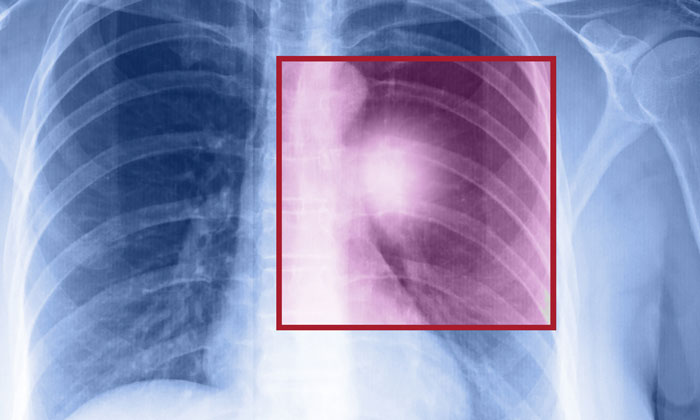Two-drug combination proves effective for most lung cancers
Posted: 6 April 2018 | European Pharmaceutical Review | No comments yet
New study suggests that using a two-drug combination of currently available treatment could be more effective for most lung cancers.


According to research from UT Southwestern‘s Harold C. Simmons Comprehensive Cancer Center, combining drugs with different modes of action has a more beneficial result. The two-drug treatment consists of one drug that targets epidermal growth factor receptor (EGFR) and one that targets tumour necrosis factor (TNF), which effectively blocks the cancer from using TNF as an escape route. Using a mouse model, the researchers showed that when TNF is blocked, the cancer becomes sensitive to EGFR treatment.
Commenting on prior work in this area, Dr Amyn Habib at the Harold C. Simmons Comprehensive Cancer Center at UT Southwestern said: “There has been tremendous effort over the past several years to block EGFR as a treatment for lung cancer, but this therapy only works in a small subset of patients. The cancer fights back with a bypass pathway.”
Senior author Dr Habib continued: “Blocking both of these proteins could be a treatment that is beneficial for the majority of lung cancer patients.”
Lung cancer is the most common cause of cancer deaths in the U.S. for both men and women, according to the National Cancer Institute and in 2017, lung cancer caused 26% of all cancer deaths. Non-small cell lung cancer (NSCLC) – the type of lung cancer for which the EGFR/TNF inhibitor combination would be effective – comprises approximately 85% of all lung cancers, meaning this treatment would have a profound effect for patients.
Two-drug combination set for phase 2 clinical trial
The latest findings build on previous work by Dr Habib‘s lab that demonstrate the same combination of drugs was successful in a mouse model of glioblastoma, a deadly type of brain cancer.
Researchers are now planning a phase 2 clinical trial of the two-drug strategy, and because the two drugs are already FDA-approved, they hope to be able to launch the trial within a year, said oncologist Dr David Gerber with the Simmons Cancer Center, who will lead the trial. The clinical trial being planned will test the treatment in both lung cancer patients and those with glioblastomas.
“If this strategy is effective, then it might be broadly applicable not only against lung cancer but also against other cancers that express EGFR, which include brain, colon, and head and neck cancers,” said Dr Gerber, Associate Professor of Internal Medicine and Clinical Sciences.
Another advantage of the anti-EGFR/TNF strategy is that the drugs are well-tolerated. Both the EGFR and TNF inhibitors fall into the category of targeted drugs, meaning they affect specific molecules within cancer cells, and therefore have fewer side effects. Traditional chemotherapy drugs, conversely, have broad effects that kill cells in both cancer and healthy tissue, which can cause many unpleasant side effects.
Until now, EGFR inhibitors have only been effective at treating the 10-15% of non-small cell lung cancers that have a variant of EGFR, but the two-drug combination could potentially work for all non-small cell lung cancers, explained Dr John Minna, Director of the Hamon Center for Therapeutic Oncology Research and Professor of Internal Medicine and Pharmacology.
“This finding has the possibility of dramatically altering how we treat lung cancer,” continued Dr Minna, who holds the Sarah M. and Charles E. Seay Distinguished Chair in Cancer Research and the Max L. Thomas Distinguished Chair in Molecular Pulmonary Oncology at UT Southwestern.
The research was published in the Journal of Clinical Investigation.
Related topics
Related organisations
Harold C. Simmons Comprehensive Cancer Center, UT Southwestern Medical Center








